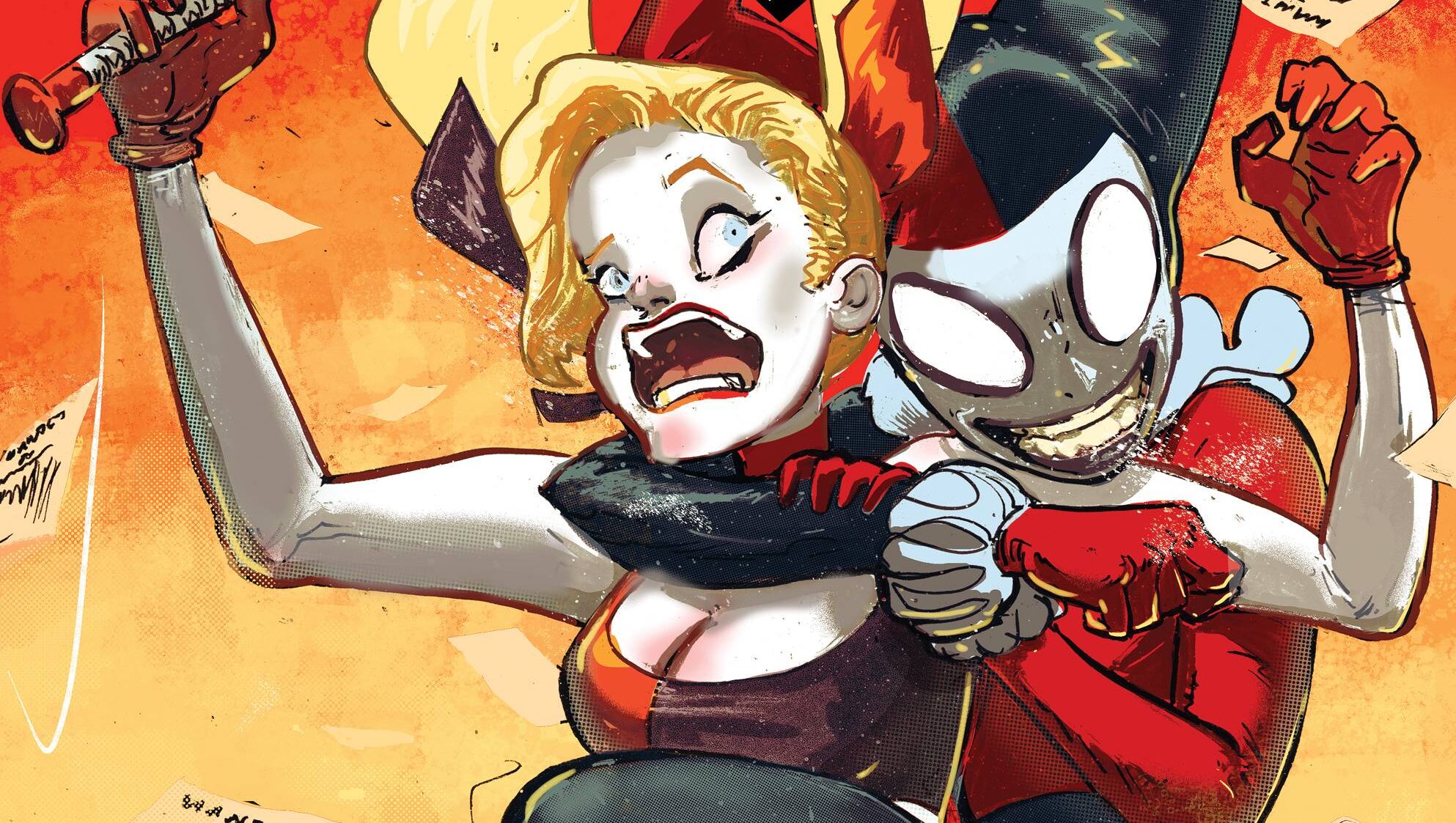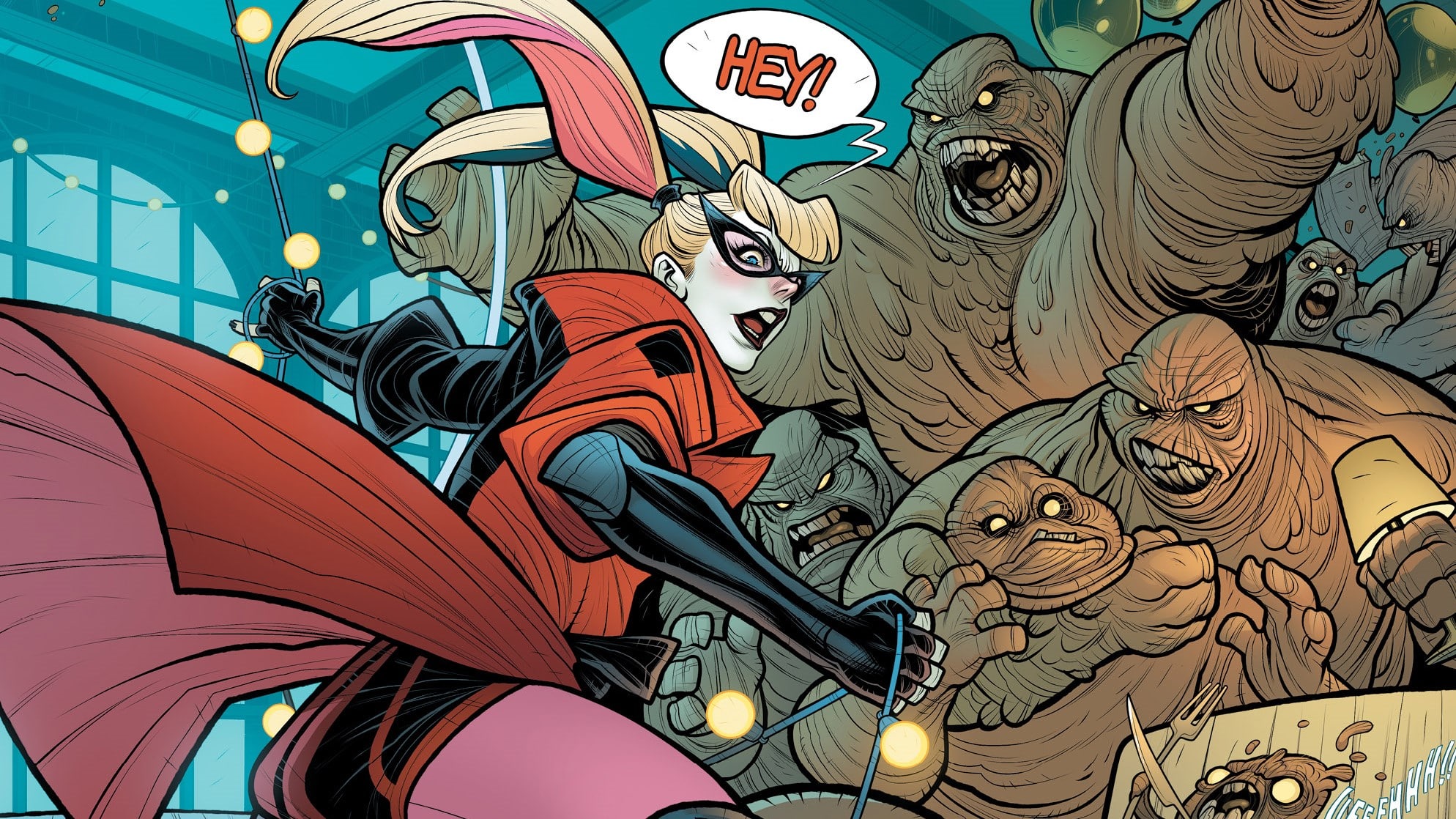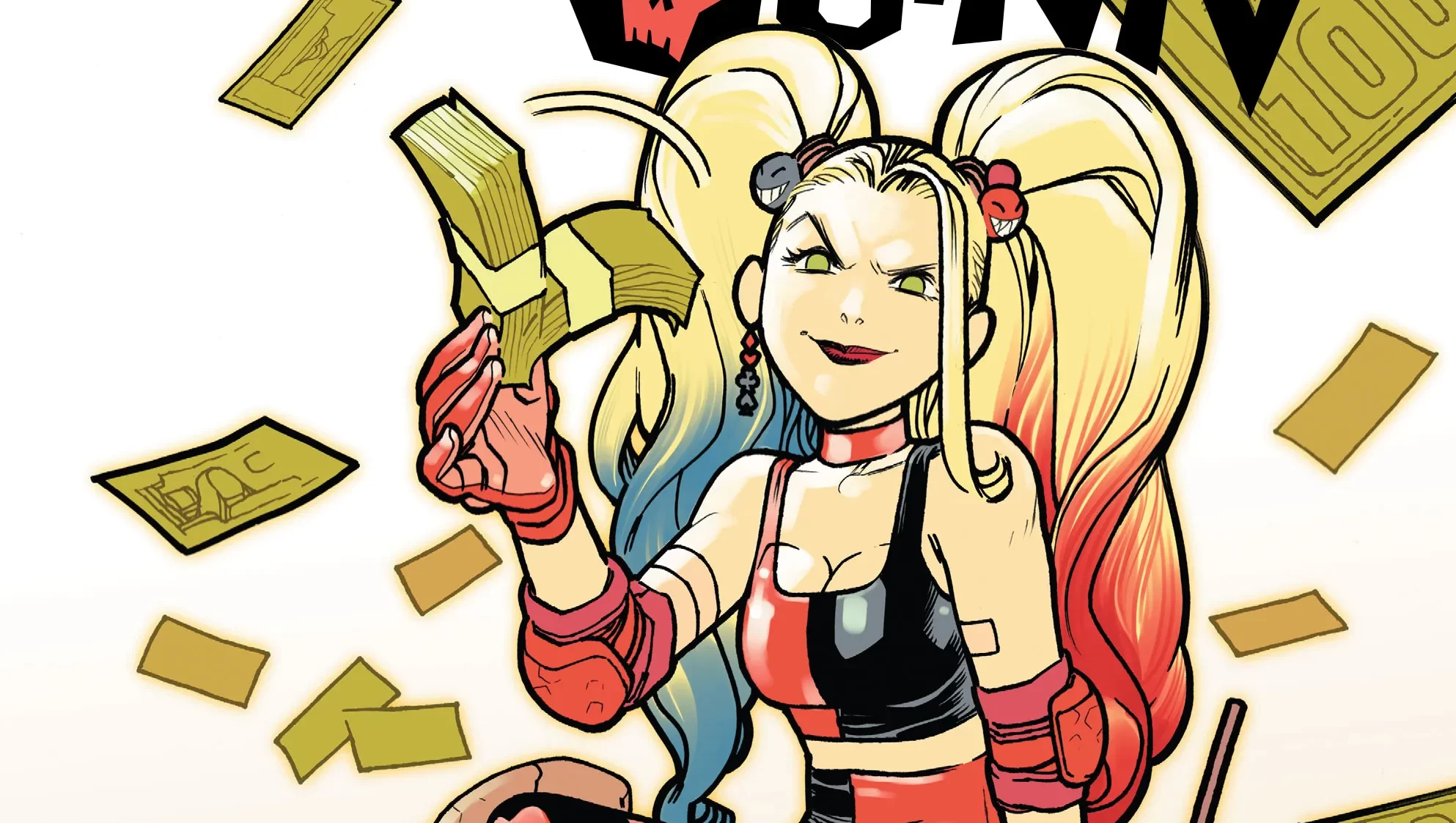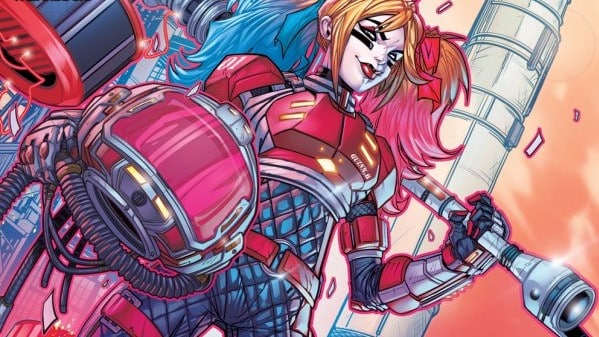For the Sam-who-would-be-Verdict, the day she met Harley Quinn was the worst of her life. It would be the day she lost all hope in justice, all semblance of the life she knew and become possessed by hate and the murderous need for vengeance. For Harley Quinn? It was Tuesday. The origin of Verdict finally revealed in Harley Quinn #16, written by Stephanie Phillips, drawn by Riley Rossmo, colored by Ivan Plascencia, and lettered by AndWorld Design.
Harley’s come a long way.
What’s more, she’s come a long way as a superhero comics character, where everyone’s favorite version of the character overlays all other versions (speaking of which, who else is excited about that Season 3 announcement?), where character consistency is a matter of luck more than anything else, where the version of a character you don’t like drops from your headcanon to be ignored or derided whenever it pops up again.
Spending as much time with this run’s version of Harley Quinn as I have been, it’s easy to forget wild-eyed, murderous Harley Quinn. To lay all the blame for her past at the Joker’s feet. Now, how much Harley needs to answer for her past crimes, what they were, and to what extent she’s culpable for them is all a matter of headcanon, really. What matters most is the story being told now — and this issue gives us our first real flashback into the kind of person our current Harley is trying to move on from. There are some crimes, though, that no amount of redemption can ever truly make up for — and in our flashback, we see a Harley who gleefully committed just those kinds of crimes.

Last month’s issue gave readers — and poor Kevin — the last-page reveal that Verdict was Kevin’s girlfriend, Sam. Most of this issue is Sam going into her origin story, painting a picture of Harley Quinn’s wilder, unapologetically criminal days.
With this retelling, the narration is no longer talking to the reader. There’s no blurring of the Fourth Wall as Harley Quinn gives us all emotional context for the story that’s unfolding. The purpose of Harley’s narration is to get the reader on Harley’s side, and understand where she’s coming from. Here, Sam is talking to Kevin, deeply mired in the world of the comic. Even through her narration is attempting to do the same thing Harley’s does – garner sympathy from her audience, provide emotional context to the story she’s unfolding – we’re one step removed, and it’s clear that Sam is not someone we’re meant to connect with in the same way. We get to have all the perspective — none of the sympathy.
Sam’s story does a remarkable job of othering Harley, of stripping away all we know about her and showing her to us through fresh eyes. Most comics bring their villains intimately close to the readers — here, there’s distance. There’s awe, wonder, curiosity, and enough of it to overpower a more appropriate fear and wariness in the hearts of the naive. Sam didn’t see threats — she saw celebrities, and was completely blindsided when this particular celebrity caused the death of her fellow officers then ran away into the night, scot free.
To add insult to injury – and paranoia to pain – Sam learns that the only reason Harley escaped was because of the corruption of the cops transporting Harley. Not only had the masks of Gotham ruined her life, they had corrupted an institution she had thought was safe from their influence — and in Sam’s eyes, she was the only one who saw how wrong that was.

The silliness of Harley’s action scenes, and the shaky panels that sell the impact of the action, all of that is still there. But the colors get darker, and more intense. Harley’s eyes are crazed, hard, and gleeful in a way that we haven’t seen in this series so far. She’s causing pain, and she likes it. No one does oranges like Plascencia, and the oranges here meet right between the splashes of violent red and the explosive shocks of yellow. In this comic, it’s the color of everything going wrong — it’s destructive, and there’s no going back from it.
When Sam learns of the corruption in her precinct, though, and makes her first kill, the colors go a pale green, contrasted with shadows of pale purples. It’s surreal. It’s a nightmare, and it’s clearly one Sam’s still caught in — a more grounded version of that color theme remains when we cut back to the present.
As hard as the action hits, it’s those colors that linger for me when present day Harley Quinn drops in for a visit. You can feel the echoes of Sam’s story still ringing in Kevin’s head, as he looks at Harley — and you can tell that part of him isn’t looking at the friend he’s made over the last 15 issues and an annual. He’s looking at a killer, and seeing eyes that gain pleasure in violence.

Sam’s story was well told. I don’t feel a lot of sympathy for the killer she’s become, nor do I think that she’s a villain worth coming back to multiple times in future stories — a Gotham staple, Verdict ain’t, but I do understand where she’s coming from. The running theme of this series has been villains who won’t let Harley escape her past, but where Hugo Strange and Keepsake both had their own warped, twisted versions of who they thought Harley should be, Sam’s has the clearest view of all.
It’s good to know exactly what kind of Harley Quinn Stephanie Phillips has in mind, given how moving on from that version is this book’s biggest focus. To know this team’s own headcanon — because no two comics creatives vision of a character perfectly aligns from run to run. This adds weight to the guilt Harley feels, to the way other people look at her, and is a good reminder of how far she’s come.
I have no idea how this story arc resolves, though I suspect it’s just an issue away — but I have a feeling that resolution for Harley is still going to be a long time coming.
Armaan is obsessed with the way stories are told. From video games to theater, TTRPGs to comics, he has written for, and about, them all. He will not stop, actually; believe us, we've tried.






